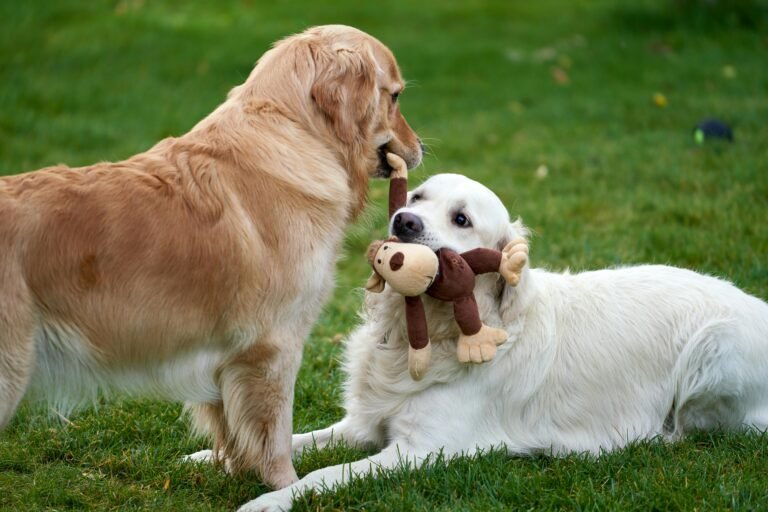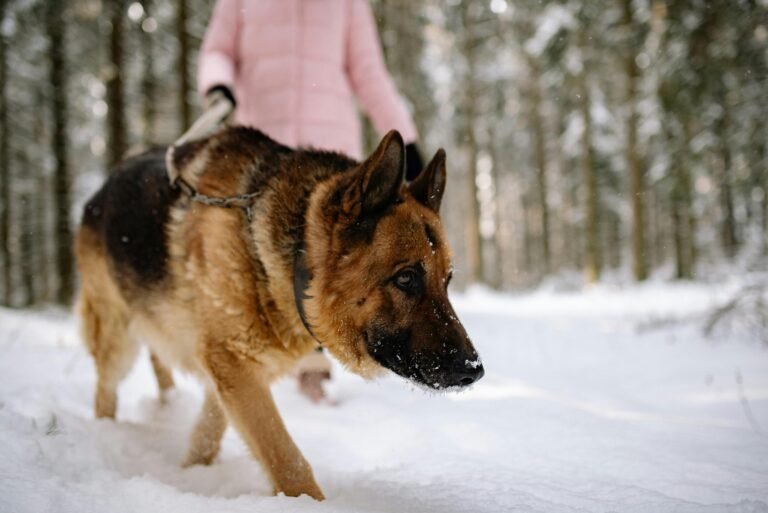Introduction
Dogs communicate constantly — not with words, but with movement, posture, and expression. A wagging tail, perked ears, or a yawn might seem straightforward, but each carries layers of meaning depending on context. Unfortunately, many of the most common interpretations of dog behavior are actually myths. Misreading those signals can cause confusion, stress, and even accidents. Understanding your dog’s true body language helps you respond with empathy and build a deeper bond based on trust — not assumptions.
Myth #1: A Wagging Tail Always Means a Happy Dog
Perhaps the most widespread myth in dog behavior — that tail wagging always equals happiness — is only half true. Tail movement is emotional, yes, but it reflects arousal, not necessarily joy. A wag can signal excitement, tension, or even aggression depending on speed, height, and stiffness.
- Loose, sweeping wag: Relaxed, friendly, genuinely happy.
- High, stiff wag: Alert or challenging — often a warning before a reactive response.
- Low, slow wag: Uncertain or cautious; may reflect insecurity.
- Full-body wag: True joy — relaxed muscles, soft eyes, tail swaying naturally.
In short: a wag means engagement, not necessarily positivity. Always read the whole body, not just the tail.
Myth #2: A Yawn Means They’re Tired
Dogs yawn for many reasons, and sleepiness is only one of them. In canine communication, yawning is often a calming signal — a way to diffuse tension or show submission. You’ll often see yawning in stressful situations: during vet visits, while being hugged tightly, or when owners speak loudly.
It’s their way of saying, “I’m not a threat” or “Please calm down.” So if your dog yawns mid-training or during play, don’t assume they’re bored — they might be trying to ease emotional pressure.
Myth #3: When a Dog Shows Their Belly, They Want Belly Rubs
Not always! While some dogs absolutely love belly rubs, others roll over to display submission, not invitation. In canine terms, showing the belly can mean, “I trust you” — or, “I surrender, please stop.”
Look at the rest of the body for clues:
- Relaxed body, loose tail, open mouth: They’re asking for belly rubs and enjoying the moment.
- Tense muscles, tucked tail, stiff legs: They’re appeasing or anxious — avoid touching until they relax.
Respecting this distinction prevents accidental stress and builds trust.
Myth #4: Raised Hackles Mean Aggression
When the fur along a dog’s back stands up, it’s called piloerection — and it doesn’t automatically mean anger. Raised hackles indicate emotional intensity, not intent. It’s a physiological response triggered by adrenaline, similar to goosebumps in humans.
A dog with hackles raised could be scared, excited, surprised, or unsure. To interpret it accurately, look at facial expression and tail position. A soft mouth and wagging tail likely signal curiosity; stiff muscles and a fixed stare mean tension. Hackles are the exclamation mark, not the sentence.
Myth #5: Direct Eye Contact Is Always a Sign of Dominance
Dogs use eye contact to communicate, but it’s not always about power. In fact, direct but relaxed eye contact is a sign of comfort and connection — especially between bonded humans and dogs. The myth of “never look a dog in the eyes” comes from misunderstanding wild animal behavior.
Here’s the nuance:
- Soft, blinking eyes: Trust and affection — often seen in cuddling or training.
- Hard stare, stiff body: Warning or challenge — time to give space.
When mutual trust exists, gentle eye contact actually releases oxytocin — the same hormone that bonds mothers and babies.
Myth #6: A Dog Licking You Means Love
Sometimes, yes — licking can be affectionate. But it also serves other purposes: communication, appeasement, or even taste curiosity. Puppies lick their mothers’ mouths as a sign of respect and to request food. Adult dogs often lick humans to show deference or comfort, not necessarily passion.
Excessive licking, however, can indicate anxiety or boredom. If your dog licks constantly, especially in repetitive patterns, it might be a self-soothing behavior that signals stress. The difference lies in context and intensity.
Myth #7: A Growling Dog Is Always Dangerous
Growling isn’t a bad behavior — it’s communication. Dogs growl to express discomfort, fear, or a need for space. Punishing growling teaches dogs to suppress warnings, which can make them more unpredictable later.
Instead of scolding, listen. Growling is your dog’s polite way of saying, “I’m uncomfortable.” Respect that message, give distance, and assess what triggered it. Understanding growls helps prevent escalation — and strengthens trust through respect.
Myth #8: A Happy Dog Always Wags and Smiles
While a wagging tail and open mouth often mean happiness, some dogs “smile” under stress — pulling back their lips or panting as a tension release. Similarly, wagging can occur during frustration or uncertainty.
The real indicator of happiness? Loose body movement, wiggly hips, and a balanced tail. When your dog’s whole body seems to dance with joy, that’s genuine happiness. A tight face and rigid tail, even with a wag, is not.
Myth #9: When a Dog Freezes, They’re Just Focused
Stillness is one of the most misinterpreted signals. A frozen dog isn’t necessarily focused — they’re often conflicted or fearful. Freezing before a growl or bite is a dog’s last attempt to communicate discomfort before reacting. It’s the quiet before the storm — a warning to step back and defuse tension.
Pay attention to stillness combined with hard eyes, a closed mouth, or weight shifting forward — all signs your dog needs space immediately.
Myth #10: A Dog Who Avoids Eye Contact Is Guilty
We’ve all laughed at videos of “guilty dogs” avoiding eye contact after getting into the trash. But the truth is, they’re not feeling guilt — they’re reading your tone and body language. Avoidance is appeasement, not remorse. Your dog is saying, “You seem upset; please don’t be mad.”
Dogs live in the moment — they don’t connect punishment with past actions. What we read as guilt is actually fear-based submission in response to human emotion.
Reading Dogs Correctly: The Whole Picture
True dog communication isn’t about one gesture — it’s about the full emotional context. Every signal is part of a sentence in their language. For example:
- A wagging tail with soft eyes → joy and openness.
- A wagging tail with a stiff body → nervous energy or warning.
- A yawn during play → excitement management, not sleepiness.
- A lean combined with eye contact → trust and affection.
To truly understand your dog, observe patterns, not snapshots. Dogs communicate holistically — head to tail, ears to paws.
Conclusion
Decoding dog body language is less about memorizing signals and more about empathy — seeing the world through their eyes. When you slow down, observe, and respond calmly, you speak their true language: presence and trust. The next time your dog yawns, wags, or leans, look beyond the surface. They’re not just moving — they’re speaking. And when you listen carefully, you’ll realize they’ve been telling you how they feel all along.



